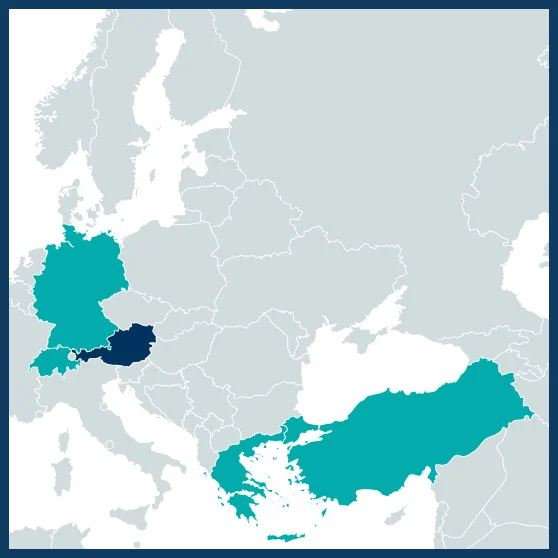04-2014 to 05-2017
€ 792 943
Mark van Kleunen
mark.vankleunen@uni-konstanz.de
University of Konstanz – GERMANY (Coordinator)
University of Vienna – AUSTRIA
CNRS – University Joseph Fourier of Grenoble – FRANCE
University of Tübingen – GERMANY

Most naturalized and harmful invasive alien plant species in Europe have once been intentionally introduced for ornamental purposes. Thus, it is likely that future plant invaders will also be recruited from those ornamental plants currently growing in our gardens. Ongoing climate change might create increasingly suitable conditions for many ornamental plants, particularly those with origins in warmer regions with more variable rainfall patterns. This may result in new invasions by formerly unproblematic ornamental plants. Identifying such “sleeping invaders” before they spread is highly desirable, and would give stakeholders (in particular invasive-plant managers and the ornamental plant industry) a head start in preventing future invasions.
WhoIsNext will combine modelling with experiments to study a large number of ornamental plants. The project will assess which of these species will most likely establish and become invasive, and which regions of Europe will most likely be affected by invasions, under climate change.
The work along the project period will be conducted as follow:
1. Development of a database
The project will start by making a comprehensive overview of those ornamental alien species that are currently frequently grown in Europe as garden plants. The database will be used to test which species characteristics are associated with current naturalization success in Europe, and which ones are already known to be naturalized in other parts of the world. Most importantly, this database will be used to select a core set of 50 ornamental alien plants that will be included in the experimental and modelling studies.
2. Implementation of experimental and modelling studies
Experimental tests will be conducted to study how ornamental alien plants respond to warming and changes in precipitation. In addition, an invasion-simulation model will be developed, and landscape-simulation modelling and spread-modelling approaches will be used to assess the probability that certain ornamental species will establish at the landscape- and European-wide scale, respectively. These models will also allow assessing which types of habitats and which regions will be most vulnerable to invasions. The modelling studies will help to design the experiments and will provide predictions to be tested in the experimental studies. The experiments, on the other hand, will provide parameters for the modelling studies, and a ground truth for the model findings.
3. Dissemination of results
The project’s results will be synthesized and disseminated to the relevant stakeholders, such as the ornamental-plant industry, garden-plant retailers, horticultural societies and policy makers. This goal will be achieved by presenting our results at horticultural trade shows (e.g. The RHS Chelsea Flower Show), by presenting our results on our webpages, and by organizing a workshop for stakeholders.